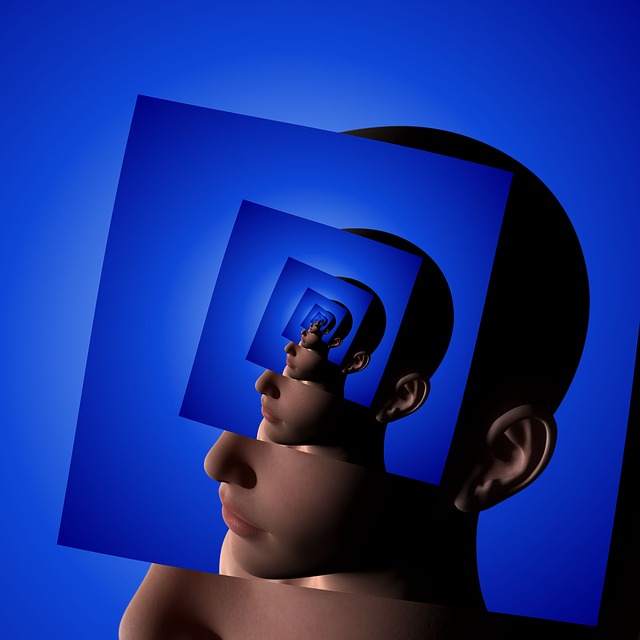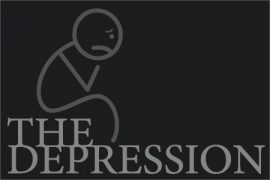How did science and medicine change across time in how they perceived mental health?

Is it ‘Mental Health’ or ‘Psychiatry’ and how come it is mental not brain health? One thing for sure is that these two terms have been used interchangeably despite their differences, and yet the problem isn’t only on the surface level of words. Psychiatry is described in the dictionary as ‘healing of the psyche’ or the soul. On the other hand, mental health is a broader term that encompasses all physical, social, psychological and emotional dimensions of our beings and how resilient we are facing all types of challenges and how able we are to contribute positively to society (according to the World Health Organization). Therefore, mental health will be my choice of word while referring to such an extraordinary specialty.
Though many don’t think mental illnesses are of big importance, schizophrenia is the top ranking disability in the world; above all physical illnesses, and it’s followed by severe depression (MHFA England). Yet, mental health has always struggled to be taken seriously as a science. For many people, it is a pseudoscience responsible about interpreting dreams and ridding people of their ‘demons’. In fact, it has faced a professional isolation from medicine as psychiatrists are not considered proper doctors by some doctors of other specialties, due to the existing bias amidst professionals themselves. The number of psychiatrists has decreased as medical students continue to shy away to avoid the ridicule. What I consider sad though is how people still cannot distinguish the difference between psychologists from psychiatrists. Psychiatrists are medical physicians who had to go through medical school before specializing in mental health for four years. Psychologists however have studied the history and updated science of psychology. Psychologists offer psychological assessments and work alongside with psychiatrists to help people with various mental illnesses.
Throughout history, controversies and dilemmas have always been associated with this speciality. Personally, I believe that Healthcare Professionals have contributed majorly to the roots of the stigma. Isolation and asylums became widespread by the 17th century with overcrowding and poor sanitation of those asylums. Prior to that, trepanation was used to remove part of the skull thinking it would release the ‘demons’ residing inside. Exorcism and prayers, deliberately sending patients into an insulin coma between 1927 until the 1960s, while immersing others in cold baths or wraps are all examples of what professionals had to offer as forms of therapy at the time. Ladislas von Meduna has pioneered the seizure therapy with a belief that inducing seizures in patients with schizophrenia would help with their treatment. In 1943, doctors at Willard administered 1,443 shock treatments to patients without any precautionary measures. Though this practice continues to our present day, anesthesia is given to wean off the pain associated with such procedure.
In August 25th, 2002, the Japanese Psychiatry Association has decided to change the naming of Schizophrenia from “Seishin-Burretsu-Byo” (mind-split disease) into “Togo-shitcho” (integration disorder). With this change, Japan has become the first country to change the naming of disorders to alter the public image with realistic optimism. Countries like China, South Korea, and the Netherlands have followed. Taiwan, is another prominent example in which changing a clinic from Psychiatry & Neurology to the Mental Clinic has increased the number of visiting patients. Skeptics, however, are considering such efforts as a band-aid that ignores the root cause of the problem.
Mental health analysis and research has had slow pendulum swings between environmental and biological explanations for behavioural manifestations. Autism & Schizophrenia are no longer attributed to “youth violence or poverty” nor emotionally cool “refrigerator mothers.” Recently there has been a major shift of research that moved attributing the source of mental health problems from environmental to biological. However, behaviour, environment, and the power of social connections cannot be underplayed or overlooked while paying closer attention to the biological factors alone. In my opinion, research needs to balance all such factors and address the curious and inexcusable gap between deciphering diseases and finding out what works best to counteract them.
To date there are no official biological tests used to diagnose mental health problems despite the rising various claims. A myth that has been refuted by psychiatrists is the chemical imbalance in the brain theory. Despite it being unsubstantiated by empirical research, many insist on it. Peter Breggin mentioned in his book titled ‘Toxic Psychiatry’ in 1991 that the drug company Eli Lilly helped advance the false theory of chemical imbalance as a marketing scheme to boost sales of the landmark antidepressant ‘Prozac’ without any sound scientific explanation. Specialists use various biological tests instead to screen for co-existing physical illnesses that might contribute to an individual’s mental health. Questionnaires and scales are also used to assess and arrive at a diagnosis. It is possible that the absence of precise chemical and imaging tests might have majorly contributed to the stigma towards mental health.
You might be wondering that if accurate tests are unavailable, then could some of the diagnoses be wrong? My simple answer is ‘yes’. It is an alarming prevalent phenomenon even with the presence of the Diagnostic & Statistical Manual of Mental Disorders (DSM)-5 published by the American Psychiatric Association. This Manual is considered the bible of diagnoses providing standard criteria for classifying mental disorders. How could the diagnoses be wrong? Common reasons include:
- Patients reluctant to provide professionals their full symptoms due to shame or embarrassment,
- Lack of cultural competence between mental health physicians stereotyping certain ethnicities or nationalities as ‘mentally healthier’,
- Availability of certain medications that encourage specialists to go with a diagnosis that can be covered by such medications. This increases the risk of dysfunction between patients.
Despite fierce opposition from the skeptics, I join my voice to the rising voices demanding the merger of neurology and psychiatry as emerging evidence continues to explain the underlying mechanisms of the brain and its connections. An educational reform is required to address the scarcity of information available to the public.
To conclude, the brain continues to be a mystery yet to be discovered, I stand confident when I say that a day will come in which psychosis will be approached via objective tests very much like the ones used to diagnose heart abnormalities and other physical illnesses.




Great information. Yes, day by day science invent new things which are helpful in every field.